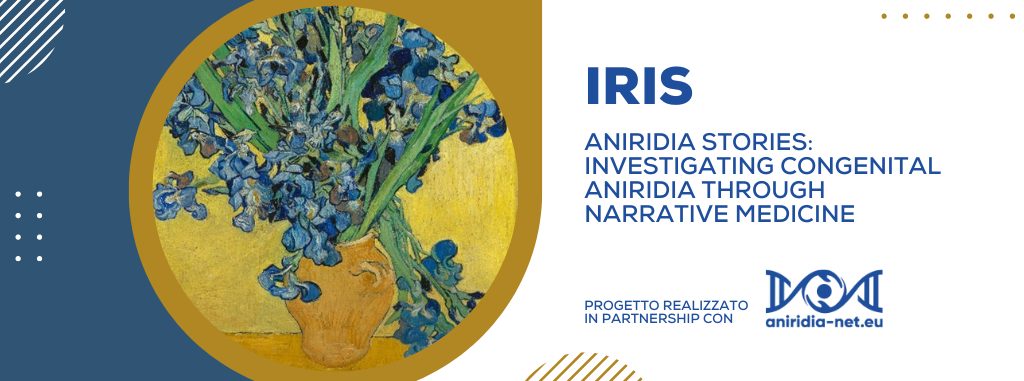
THE PROJECT ‘IRIS’
The project IRIS – Aniridia Stories: investigating congenital aniridia through narrative medicine aims to collect the narratives of patients with congenital aniridia and their informal caregivers to understand the illness burden related to this condition all over European countries.
The project intends to:
• Understand, through patients’ and caregivers’ narratives, the daily experience of patients with congenital aniridia in school, working, and social contexts, as well as strategies or barriers in coping with the illness burden.
• Highlight new elements regarding the quality of life, the care pathway and other factors that may influence the patient’s or caregiver’s daily life.
• Detail the illness burden, identifying direct and indirect social impact.
• Identify personal, social, and institutional resources that contribute to improve the daily lives of patients with congenital aniridia and their caregivers.
TO PARTICIPATE IN THE PROJECT WITH YOUR OWN NARRATIVE
We invite you to write about your experience with Aniridia at the following links:
NARRATIVE MEDICINE
Narrative Medicine (NM), i.e., the collection of the narratives of patients and their personal, social and care network of reference, deals with how a person lives the experience of illness and what the possible meaning of a care pathway to be initiated and maintained together with the health professional or care team might be.
ANIRIDIA
Aniridia is a panocular disorder affecting tissues throughout the eye, in addition to the iris abnormalities for which it is named. Affected individuals characteristically have absent or altered iris tissue and foveal hypoplasia, which generally leads to nystagmus and impaired visual acuity (usually 20/100–20/200). Later onset cataracts, glaucoma and corneal opacification are responsible for progressive visual failure. The phenotype can vary between and within families, but affected individuals usually show little difference between the two eyes.
In partnership with

